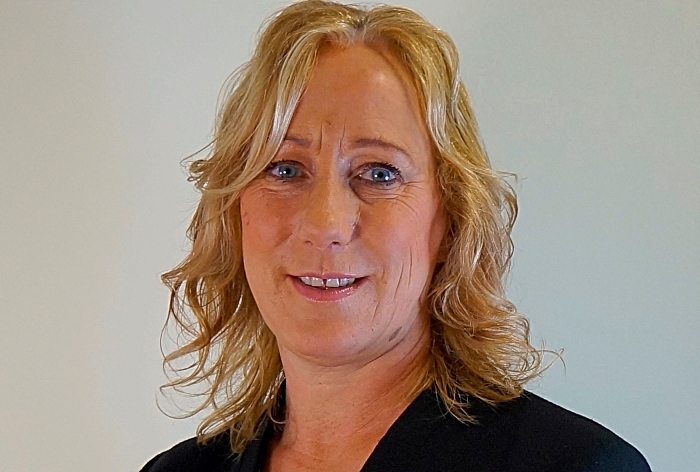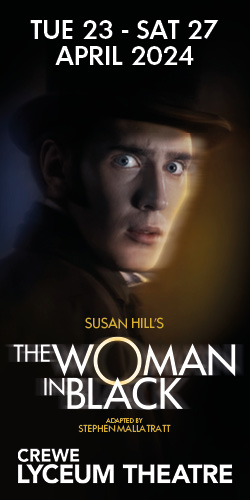
Dear Editor,
It was a wonderful feeling being part of the Cheshire East Labour/Independent administration on Wednesday 16th December after voting in favour of a 20’s Plenty in 2020 motion to reduce speed limits on Cheshire East roads where people live and work, on housing developments, town and village centres.
This opportunity to look at the speed limits of all Cheshire East roads through a review of the Speed Management Strategy is truly welcome given my champion role to increase the uptake of walking and cycling; reducing vehicle speeds on roads where it is not appropriate or acceptable is key to increasing the number of people being active by walking and cycling.
The passing of this Motion is also an opportunity to review the speed of small lanes such as Broadhurst Lane in Congleton where a recent petition received over 500 signatures to make the lane 10mph.
Forge Lane, Congleton where drivers are speeding because 30mph is the limit, but it certainly isn’t a suitable speed for the residents that live there, the road is not wide enough.
They are frightened to own a pet for fear of it being run over, which is what happened in Broadhurst Lane.
The 20’s Plenty in 2020 for Cheshire East Motion will enable us to change the speed limit on their roads which means they can live without being in fear of losing their pet.
A review of the Speed Management Strategy will also enable Cheshire East Council to reduce national speed limits on country road where there are often horse riders and walkers.
In Congleton only last week a tragic collision where a vehicle was travelling too fast for the road, but wasn’t breaking the speed limit, meant a horse has died, and the rider will most likely be traumatised from this experience.
Reducing speeds on country roads where 60mph is not appropriate will make like safer for walkers as well as horse riders.
The amendment to the original Motion by Cllr Laura Crane, portfolio holder for highways was most welcome because it now means we can look at all road speed limits, not just where they are currently
30mph.
Another benefit is we can look at how restrictions would be implemented, whether that be speed zones, default 20mph speed limits or other ways of reducing vehicle speed.
I very much thank Cllr Laura Crane for this amendment, with a tweak from Cllr Phil Williams and seconded by Cllr James Barber, the borough’s young people’s champion.
The Speed Management Strategy being included as part of the Motion that was unanimously passed, (Audlem abstained from voting), provides the structure on how we will move forward with the process; we are on to it already.
This process also provides the opportunity for all residents in the borough to provide input and offer suggestions for roads that they believe the existing speed limit is too fast, preventing their community from feeling safe to walk and cycle or to ensure their pet arrives home that day, rather than receiving a warm collar.
I would urge residents across the borough to start providing their suggestions today, they can email [email protected], their local parish or town council or their Cheshire East ward councillor. I am more than happy to be copied into any requests.
A big thank you to Mr Mayor, Cllr Barry Burkhill for allowing this Motion to be discussed at Full Council the Officers for their organisation.
The press coverage alone will encourage residents to think about the roads where they live and if they feel a speed limit reduction would be a good idea.
The review can also include a range of changes such as all new housing developments are set at a default 20mph, all areas within a town centre, all lanes with sub-standard widths be 20mph or 10mph.
All National Cycle Network routes could be 40mph.
Passing the 20’s Plenty in 2020 Motion on the 16th December is a great day for the residents of Cheshire East because if we reduce speed of traffic we will help people feel safer walking and cycling increasing activity.
You will most likely survive a collision at 20mph, at 30mph you will most likely end up as a KSI.
More people cycling reduces congestion and improves air quality and makes room for people whose need for motorised transport is essential for them to be independent.
Everybody wins.
Yours,
Cllr SUZIE AKERS SMITH
Cycling and Walking Champion – Cheshire East Council

















Well Done – Cllr Suzie Akers Smith & CEC Councillors
Thankyou – I know it will take time and some people will not like it. But the reduction on some country lanes where people horse ride & cycle, shopping streets where people cross roads a lot & of course residential streets will be very good.
More investment in cycle paths needs to be done – particularly movement from the road to the cycle path and back to the road (rather then finding you need to get off your bike to re-join the road).
A step in the right direction.
I have been watching reports in the local press concerning the debates in Cheshire East Council about the imposition of 20mph speed limits in the local area.
I can honestly say I am dismayed by the strategy of applying blanket 20 mph limits for all sorts of spurious reasons and yet the Government produced report on the effectiveness of 20 mph limits published in 2019, categorically stated there were NO notable benefits.
Why do some Councillors in East Cheshire believe they have a better understanding of speed limits and safety than the DfT?
A summary of the report mentioned above and I would ask that those wanting the changes read the conclusions.
The DfT. report is available on the gov.uk website but the key conclusions are as follows.
“The evidence available to date shows no significant change in the short term in collisions and casualties, in the majority of the case studies (including the aggregated set of residential case studies).”
“Journey speed analysis shows that the median speed has fallen by 0.7mph in residential areas and 0.9mph in city centre areas.”
The Council also needs to consider the necessity of 20mph speed limit in the middle of the night? What is the purpose of imposing a completely unnecessary limit when most people and vehicles are not in the street and penalising those that are?
I do not object to targeted areas (schools, outside play areas) when these facilities are being used but not many schools operate overnight and there is absolutely no sense in applying the 20mph limit through the whole 24hrs.
However, there are negative consequences to making vehicles travel slower. Slower, stop start travel increases pollution. The introduction of 20mph limits will increase pollution in urban areas which are exactly the intended 20mph areas. How can the advocates of 20mph limits reconcile these conflicting positions?
In addition, I would draw your attention to accident reports published by the D f T. For years, many claims have been made for the serious consequences of exceeding speed limits in the recorded (KSI) accidents occurring on UK roads. Exceeding the speed limit accounts for less than 5% of the KSI accidents in the UK. I am not saying that this an acceptable figure but the justification for the involvement of speed in road accidents is always exaggerated. Reducing speed limits to 20mph will have no effect, in fact in the Government report on the subject of 20mph limits shows that reducing the posted speed limit from 30mph to 20mph reduced the actual average speeds in the 20mph areas by 0.9mph or less.
Analysis of the KSI (killed and seriously injured) accidents involving vehicles where the speed limit was exceeded show that the drivers of those vehicles were:
• vehicles being used in crimes
• involving stolen cars
• aggressive driving
• drivers using drugs
• drivers with alcohol in their blood
• using mobile phones
with a few more minor criteria
Are the types of drivers listed above going to take notice of ANY speed limits, let alone 20mph.
The most serious factor in KSI accidents are drivers not paying attention to what they are doing. That includes things such as failure to observe what is happening around them and using mobile phones. Causes such as these contribute around 43% to the deaths and serious injuries on our roads. Why do some members of the Council have a blinkered view of the effectiveness of speed limits when the killed and seriously injured come from drivers not paying attention to what they are doing and that includes speed limits?
Could we not have some logical discussion in these Council debates. Look at facts and do not make decisions based on emotions would be a good starting point?